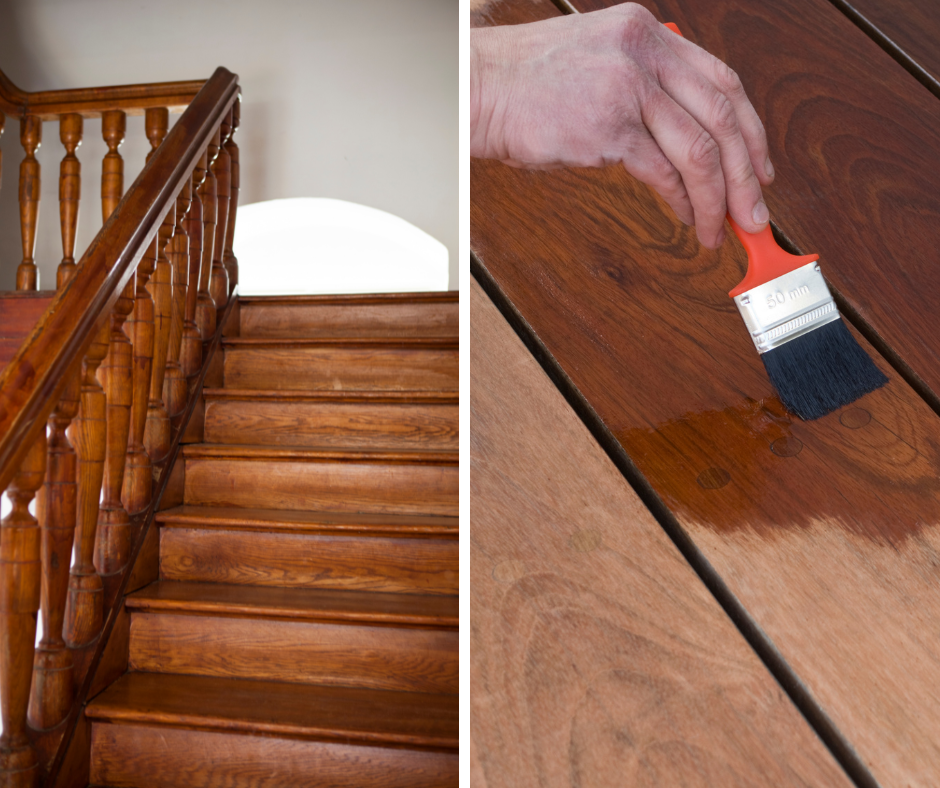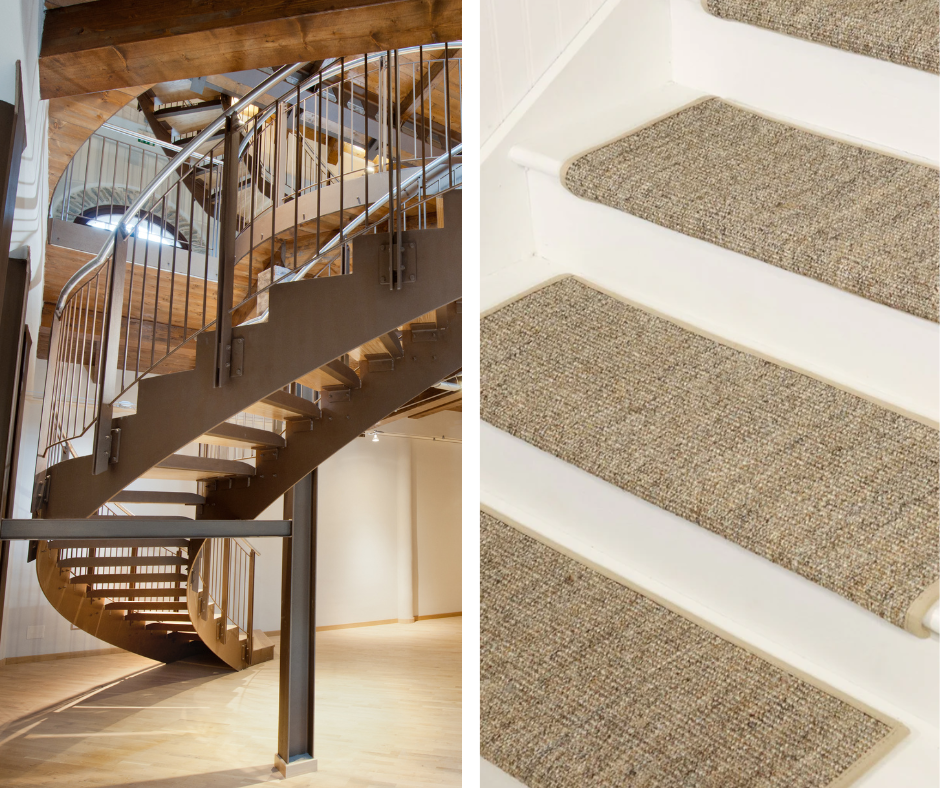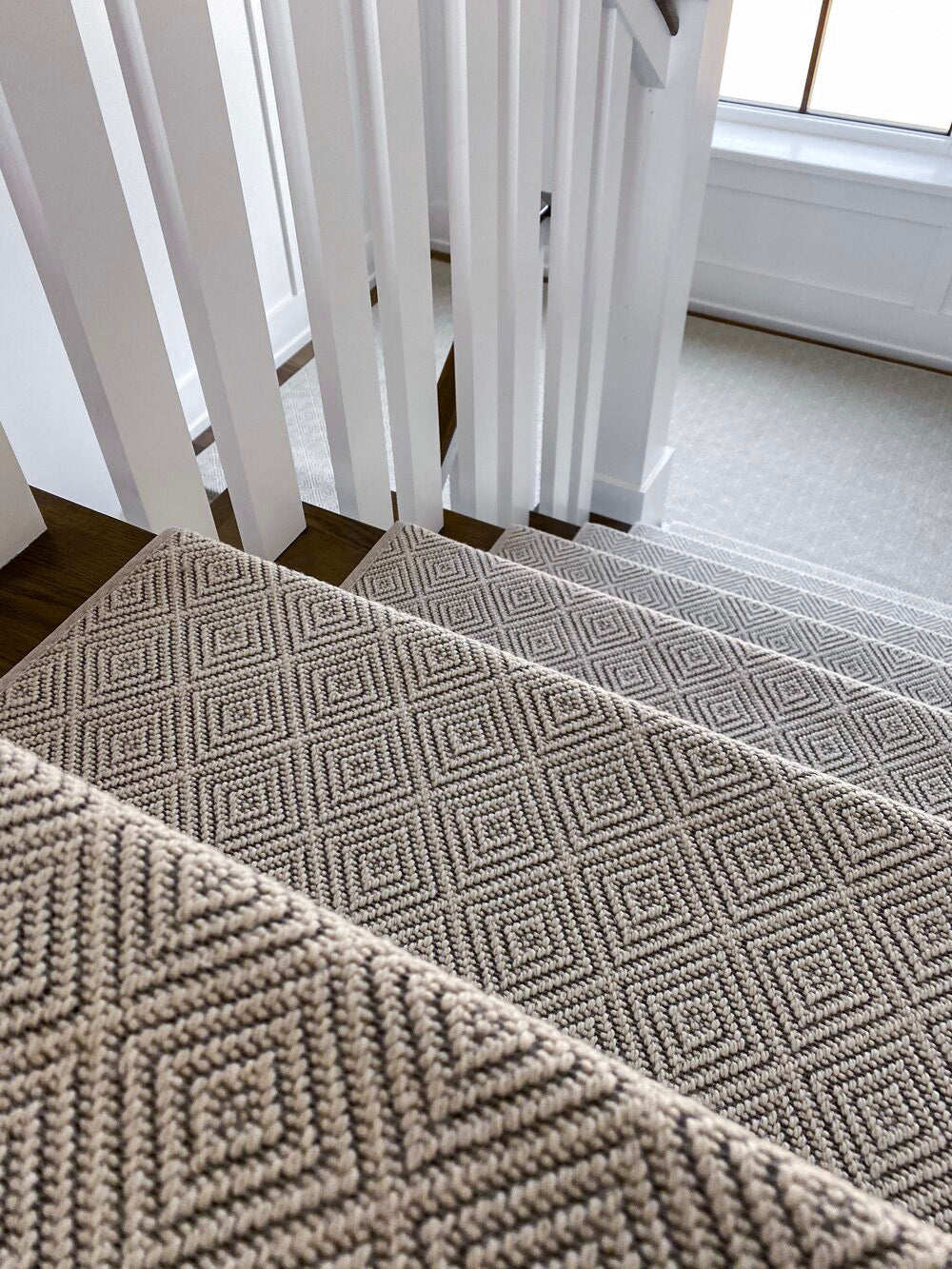Upgrading your staircase can enhance both safety and aesthetics, but many homeowners wonder: Can you put stair treads on carpeted stairs?
The short answer is no—stair treads are designed for solid surfaces like wood or tile, and placing them on carpeted stairs can create slipping hazards and damage the carpet.
However, there is a better solution.
By removing the carpet and installing carpet stair treads specifically designed for secure adhesion, you can achieve a stylish and safe staircase.
This guide will explain why traditional stair treads aren’t ideal for carpeted stairs and how to properly upgrade your stairs for lasting durability.
Why Stair Treads on Carpeted Stairs Aren’t Ideal
Adding stair treads to a staircase is a common way to improve safety, but when dealing with carpeted stairs, there are several challenges that make it less effective.
Carpets add a layer of softness that can interfere with the adhesive or grip of stair treads, leading to instability.
Additionally, stair treads are typically designed for hard surfaces, which means they may not function as intended when placed over carpeting.
Below are the main reasons why stair treads on carpeted stairs are not the best choice.
1. Safety Concerns
Stair treads are designed for smooth, solid surfaces like wood, tile, or concrete.
Placing them over carpet can create an unstable and insecure footing.
This increases the risk of slips and falls. The carpet can cause stair treads to shift or buckle, leading to dangerous tripping hazards.
Carpeted surfaces don't provide a strong adhesion base, which may cause treads to shift underfoot.
This is especially hazardous for children, seniors, and pets who rely on steady footing when using stairs.
Unsecured stair treads can slide when stepped on, making it difficult to maintain balance, increasing the likelihood of accidents.
2. Carpet Damage and Reduced Longevity
Installing stair treads over carpet can cause premature wear and tear due to constant friction and pressure.
Over time, this can lead to visible indentations, fraying, and deterioration of the carpet fibers.
This makes your staircase look worn out and can reduce the lifespan of both the carpet and the stair treads. The constant movement of stair treads against the carpet may also cause discoloration or uneven wear, making the staircase appear patchy and outdated. Replacing an entire staircase carpet due to these issues can be costly, which is why it is important to consider a more durable alternative.
The Best Alternative: Stick-On Stair Treads
If you're looking to enhance your staircase’s safety and aesthetics, removing the carpet and installing stick-on treads is the ideal solution.
Stick-on stair treads are designed specifically for non-carpeted stairs and provide a firm, slip-resistant surface.
Unlike regular stair treads that may slip over carpet, these treads are engineered for a secure grip on hard surfaces, making them the best alternative for ensuring both safety and style.
How to Refurbish Stairs for Stick-On Treads
When transitioning from carpeted stairs to stick-on treads, the installation process requires proper preparation to ensure a secure fit.
Below are the steps to properly refurbish stairs for stick-on treads.
Step 1: Remove the Carpet
Carefully remove the existing carpet.
Ensure that all staples, nails, and adhesive residues are completely eliminated.
Any leftover debris can affect the adhesion of the stick-on treads, making proper removal crucial.
Use pliers or a staple remover to extract any hidden staples, and a scraper to remove adhesive residue.
If glue is heavily applied, a heat gun can help loosen the adhesive, making the removal process easier.
This step provides a clean and smooth surface for the stick-on treads.
Step 2: Prepare the Stair Surface
Thoroughly clean and sand the stairs to remove any debris, rough patches, or leftover adhesive.
This is crucial for ensuring a strong and durable bond between the stair surface and the new treads.
Using a fine-grit sandpaper, smooth out any uneven surfaces to ensure proper adhesion.
Wipe down the stairs with a damp cloth to remove dust and allow them to dry completely before applying the treads.
A clean surface prevents air bubbles or gaps between the treads and the stairs, ensuring maximum grip and longevity.
Step 3: Install Stick-On Treads
Once the stairs are properly prepared, installing stick-on stair treads is a straightforward process.
-
Measure and cut the stick-on treads to fit each stair.
-
Follow the manufacturer’s instructions for proper application.
-
Peel off the adhesive backing and firmly press the treads onto the stairs.
-
Ensure proper alignment and spacing for a uniform look.
Press down firmly, smoothing out any air pockets to ensure full adhesion. Allow the adhesive to cure as directed by the manufacturer before stepping on the stairs to ensure a secure installation.
Additional Considerations: Choosing the Right Stair Treads
When selecting stair treads for your home, it’s important to consider factors beyond just safety and aesthetics.
Different materials, thickness levels, and adhesive strengths can impact performance, especially when transitioning from carpeted stairs to a hard surface.
Choosing high-quality stair treads that are designed for durability and grip will ensure long-term satisfaction and prevent frequent replacements.
Benefits of Stick-On Treads
Switching to stick-on stair treads provides multiple advantages over placing standard stair treads on carpeted stairs.
Enhanced Safety
Stick-on treads provide a secure, slip-resistant surface.
This reduces the risk of accidents on the stairs.
Their textured surface adds extra grip, preventing slipping even in high-traffic areas.
Unlike carpeted stairs, stick-on treads stay in place and offer consistent stability.
Stylish and Customizable
Available in a variety of styles, colors, and materials, stick-on treads allow you to customize your staircase.
You can match them to your home’s decor.
Whether you prefer a traditional wood-like finish, modern minimalist designs, or bold patterns, there are plenty of options to fit your personal style.
Easy to Maintain
Unlike traditional carpeted stairs, stick-on treads are easy to clean and maintain.
They require only regular dusting and occasional spot cleaning. Since they are not attached to soft materials like carpet, dirt and debris do not accumulate as easily.
A quick wipe with a damp cloth or vacuum is enough to keep them looking fresh and new.
Steps To Success
Making the right choice for your staircase is essential for ensuring both safety and longevity.
While carpeted stairs may seem comfortable, they pose risks such as slipping hazards and premature wear.
Removing the carpet and installing high-quality stick-on stair treads is a practical and stylish alternative that provides long-term benefits.
Stick-on stair treads not only enhance stability but also improve the visual appeal of your staircase.
With various design options available, you can customize your stairs to match your interior while ensuring durability.
Investing in a high-quality stair tread solution will create a safer, more attractive home environment for years to come.
Find the Best Stair Treads for Your Home
Upgrade your stairs with premium-quality stick-on stair treads from Oak Valley Designs.
Explore our luxurious collection for a safer and more elegant staircase.
-
Website: https://oakvalleydesigns.com/
-
Phone: 706.331.0315
-
Email: info@oakvalleydesigns.com
-
Address: 30 River Ct SW Bldg E Cartersville, Ga 30120




